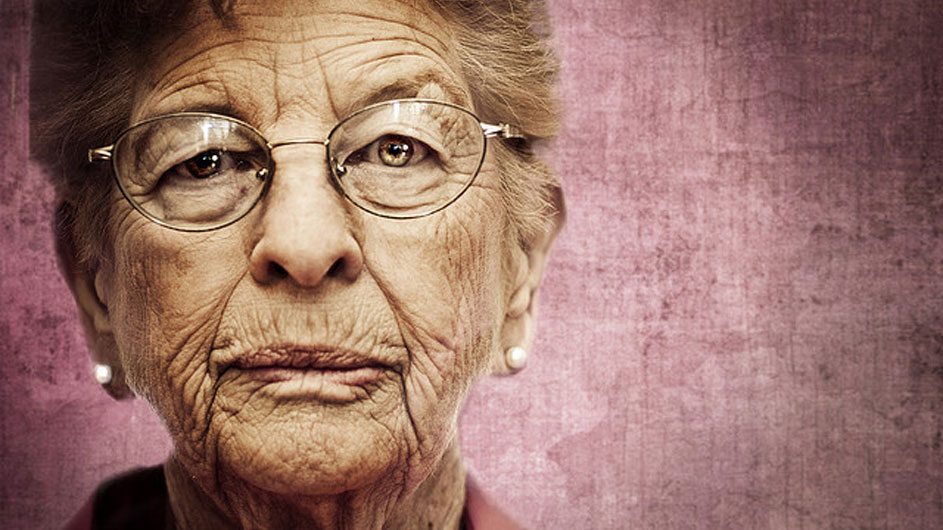
Eldercare Series: The Most Common Elder Eye Problems
From birth, our eyes are constantly growing, adapting, and changing. As a child, a person can have perfect vision but find they need corrective lenses as adults. Lifestyle and genetics both have a huge impact on a person’s overall health, especially their vision.
In the later years of life, the chances that a person will have an eye issue or disorder jumps dramatically. Three out of every five elders over the age of 65 are reported to have some form of eye disorder. The most common for seniors include Age Related Macular Degeneration, Cataracts, Glaucoma, and Diabetic Retinopathy.

Age Related Macular Degeneration (AMD)
According to Right Diagnosis, AMD affects approximately 1.2 million Canadians and 10.8 million Americans. It’s the number one cause of irreversible visual impairment and blindness in the world for people over the age of 65. This slow and progressive disease affects the center field of vision but doesn’t affect peripheral vision.
Symptoms of AMD in elders include:
- Blurry vision
- Reading becomes harder
- Straight lines are distorted
- Darkness in the center field of vision
- Colors become difficult to tell apart
Catching AMD early means that a patient may be able to keep their eyesight longer than they would if they did not seek treatment. Help prevent AMD in your elder by feeding them foods with carotenoids; egg yolk, squash, cucumber, broccoli, mango, and kiwi. It’s important to note that smoking also increases risks and that a person can have AMD without having any symptoms.

Cataracts
While AMD is the leading cause of permanent blindness, cataracts are the number one cause of reversible blindness. A cataract will slowly form on the eye lens and progress over time. The lens becomes cloudy making vision blurry for the person. Once a person starts developing a cataract, they may just need to change their eye prescription. If the cataract is severe or is causing complete blindness, the lens of the eye may need to be surgically removed and replaces with a synthetic lens.

Glaucoma
This disease affects the optic nerve and is the second leading cause of permanent blindness in the world. There a whopping 400,000 Canadians and 67 million people worldwide who currently suffer. This is a scary disease, because your elder may have no signs or symptoms. What’s even scarier, is that increased risk starts at age 40, so you may also have the disease and not even know it.
To protect your elder, they need regular vision screenings by a healthcare professional, including an exam with eye dilation. Their doctor can detect Glaucoma, and may have medications to stop the disease from progressing. For those that do have symptoms, it is a gradual narrowing in sight, which is referred to as tunnel vision.
Looking at this post now, you can see the screen and everything around it. Now put your hands over your eyes as if you’re holding binoculars. You can still see this post, but the edges of your vision are black and blocked out. This is what a person with Glaucoma symptoms may experience. It starts out gradually, but progresses until the person is blind.
According to the Glaucoma Research Society of Canada, risk factors for this disease include:
- Being 40 or older
- A family history of the disease
- Being of African, Chinese, Scandinavian, Celtic or Russian ancestry
- Being nearsighted
- Having a previous eye injury
- Using steroids and/or cortisone over a long period of time
- Having an eye injury in the past

Diabetic Retinopathy
As the name suggests, this disease affects those with diabetes and can cause blindness. There are an estimated 7,700 Canadians and 70,000 Americans currently dealing with this eye disease. The good news is that with annual eye screenings and diabetes care, up to 90% of blindness cases can be prevented. If your loved one has diabetes, act now to protect their eyesight.
Those with diabetes need to control the following three things to help prevent Diabetic Retinopathy:
- Blood sugar: Adequate care should be taken so that blood sugar spikes and drops are prevented if possible.
- Blood pressure
- Cholesterol levels
Working with both their medical doctor and their eye care specialist is key in preventing blindness from Diabetic Retinopathy. While there can be no symptoms at all, the Canadian Diabetes Association lists the following as common symptoms:
- Blurred vision
- Flashes of light in the field of vision
- Sudden loss of vision
- Blotches or spots in vision
With all of the diseases listed, the key is to catch them early and prevent vision loss. Make sure your elder sees an eye care specialist at least annually. Early detection is important, and for some people can prevent blindness. Your elder’s doctor may have more (or less) they wish to screen for based on your elder’s medical history and current symptoms. While you’re there, go ahead and schedule an exam for yourself and the other loved ones living in your home. Your eyes may thank you!
Are you caring for a loved one dealing with an eye disease? What were the first signs or symptoms that you noticed? If you have any tips or comments, let us know! Your thoughts could help others, and we LOVE reading your comments. If you have a moment, stop by on Twitter or Facebook and let’s connect!
Photos courtesy of Isaac Singleton, Arthur van Beveren, Chapendra, Robyn Turner, and Werwin15 on Flickr.










